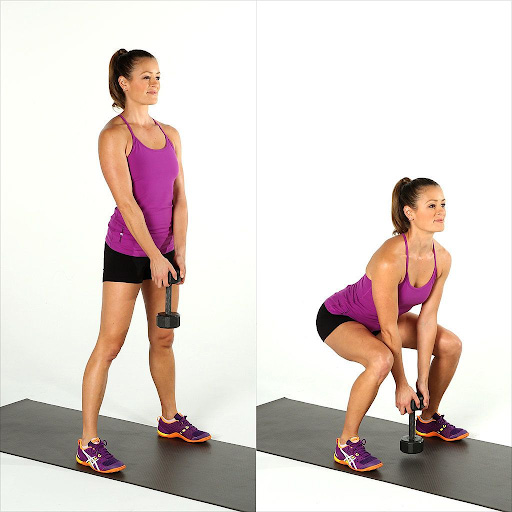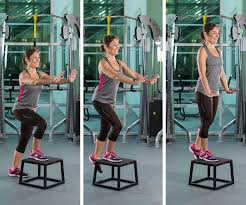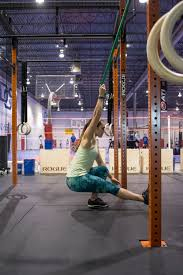Reduce Injury and Stay Active Longer
Many things about exercise have become common knowledge nowadays. For example, The American Heart Association recommends 30 minutes of “heart-pumping” activity most days of the week for maintaining cardiovascular health. Consistent strength training helps to prevent a decline in bone density for those with osteoporosis/osteopenia. Long-duration cardiovascular activity is good for memory. HIIT can be anti-aging, due to its elongating effects on chromosomes in our cells. There’s lots of information out there telling us that regular exercise is important to maintaining a healthy lifestyle. Working with a physical therapist can help you zoom in on the ideal movement practice for you. They will help you focus on practicing good technique and body awareness. Click here to schedule an appointment a Symmetry PT.
Learn How to Modify Any Exercise
In addition to working with a physical therapist, it’s also never been easier to access quality fitness content. The pandemic has made online and virtual fitness the new normal and we can zoom into our favorite class anywhere, anytime. However, not all exercises or programming will be perfectly suited for all people. It is actually impossible to construct a general fitness program that will be precisely applicable to every possible person who takes that class. This is where knowing how to modify your movements comes in. As physical therapists, we teach our patients how to take charge of their movement practice. We love our patients, but we don’t want them returning over and over again with various aches from improper exercise.
Modifications Can Help Reduce Overuse Injuries

Why is it that so many of us continue to struggle through exercises that may not be well suited to us? The answer: Peer pressure is real no matter how old you are or what setting you find yourself in. We don’t like to feel like we’re cheating or not giving it our best. The problem is that struggling through an inappropriate exercise can lead to overuse injuries like tendonitis. Tendonitis occurs when the work demands placed on a muscle group exceeds their current capacity. Modifying exercises to an appropriate level reduces the risk of acquiring an overuse injury from your workout routine. Physical therapists can help you learn where your current physical capacity is and provide you with a roadmap to reaching your full potential.
Physical Therapy Can Teach You How to Modify Effectively
Whether you’re following a program you purchased online, participating in a group class (in-person or virtual), or even working out with a trainer, sometimes we’re simply too bashful to speak up or simply change the exercise when it doesn’t feel right. Or perhaps the reason is that we don’t know how to modify a particular exercise even if we wanted to. Well– by the end of this blog, you will understand why modifying is the secret to loving your workouts so you can keep your active lifestyle longer with a lower risk of injury. All of our physical therapy patients learn the necessary principles to modify the most popular exercises they may encounter out there in the fitness world. By the time our patients are preparing for discharge for PT, they know how to employ these principles to any exercise or routine they may encounter in any class.
Modify to Prevent Injury

Modifying an exercise is not about removing the challenge. It is about making the challenge more appropriate for your body’s ability today, in this moment. Let’s set the scene. It’s 7:30am and you’ve logged on to your favorite weekday full-body virtual class. You feel a minor ache in your knee as you begin to move– nothing serious, but you know it’s there. Next thing you know you are in the middle of a lower body circuit complete with squats, lunges, and plyometric progressions. What do you do? Well, you could continue to ignore the little ache in your knee and fight through the injury as programmed. Or you could modify the offending exercise, thereby reducing pain and irritation to the knee while also prioritizing your longevity.
Learn Proper Exercise Technique and Injury Prevention with Physical Therapy
Physical therapists can quickly assess your functional needs and show you how to move accurately and effectively. At Symmetry Physical Therapy, our therapists are specially trained in a variety of areas to get you back to living the life you want as soon as possible! Our Physical Therapists will review your medical history and complete a thorough examination of your movement patterns and strategies. Together, they’ll construct a plan to meet your goals, and get you back to your favorite exercise class pain free.
Why Should I Modify My Workouts?
1. Meet Your Body Where it’s at On Any Given Day
Our bodies go through cycles. That means our capacities for physical activity can change like a planet in orbit. Everything from sleep quality, emotional stress, and meals can affect how we feel physically on any given day. Listening to your internal cues by modifying can be the difference between walking away from your workout feeling confident and accomplished vs run-down and ragged.
2. It Prepares You for the More Challenging Version in the Future
Exercise is all about evolution. We exercise to get stronger and more efficient over time. Modifying exercises that are slightly beyond your current capabilities helps you build a foundation for the future. Instead of struggling through an exercise you can’t do appropriately, change it! You’ll build better skills over time that will transfer over once you decide to attempt the more challenging version again.
3. You Decrease the Risk of Injury
Modifying moves beyond your current skill set helps prevent overloading joints or muscles before they’re ready for the challenge. Our bodies are resilient. Being intentional with your movement practice will set you up for long-term success.
4. It Gives You Something to Strive For!
Modifying an exercise helps us set goals. Want to do a strict push-up? Start with a plank, work up to a knee push-up, work in some eccentric plank work, and practice, practice, practice! Modifications give us a roadmap for improvement.
How to Modify an Exercise to Prevent Injury
Instead of teaching you how to modify just two or three specific exercises, I’m going to give you strategies. Strategies are worth their weight in gold because you can apply them over and over again. Memorize these principles and you’ll be well equipped to independently modify any exercise you may encounter anywhere.
1. Decrease the Load
The instructor calls for 3 sets of 15 squats with a heavy weight. You begin the set a 15lb-dumbbell but by rep #7, you’re regretting your choice and know you won’t be able to finish the set. If your goal is conditioning and endurance, drop that weight and swap it out for a 10lb-dumbbell or nothing at all. You still completed 15 squats. Well done!

2. Decrease the Reps
Let’s keep the same example as above. But this time, it’s more important to you that you hold on to the 15lb-DB. Maybe you’re trying to break through an emotional block about lifting heavier. Maybe you’re focused on building strength. In that case, complete as many reps with the 15lb-DB as you can with good technique. If you reach fatigue at rep #10, great! You’ve now modified this exercise to 3 sets of 10 squats with heavy weight. Carry on!

3. Slow it Down
Being able to execute a movement with good technique is a skill. Being able to execute that movement with good technique AND speed is a different skill. If you find yourself sacrificing the quality of movement for speed, slow it down. This might be the easiest modification you can make.

4. Remove the Jump and Remove Plyometric Injury
Plyometric exercises utilize power. By definition, they require a foundation of strength, good eccentric control, and a fair amount of body position-sense. If you are still working on mastering the original version of a move, you’ll be better off saving the jump for later down the road.

5. Increase Stability
Sometimes the balance is the limiting factor. If you’re teeter-tottering like your baby nephew’s Weebly wobble, consider placing one hand against a wall or table. As your balance improves, you can attempt the same move without upper body support.

Still have questions? Click here to schedule an appointment to see one of our Physical Therapists today. Our PT’s can set you on the right path in just a few sessions. Let us help you get back out there!
